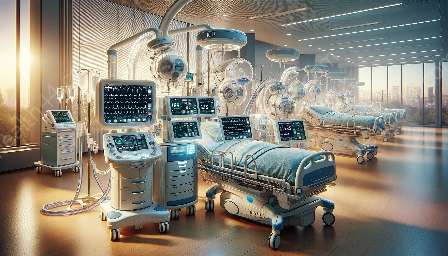Respirators play a crucial role in life support systems and medical devices & equipment by assisting individuals with compromised respiratory function. These essential devices help maintain breathing and support respiratory health. Let's explore the significance of respirators and their operation within the context of life support and medical equipment.
The Function of Respirators
Respirators, also known as respiratory protective devices, are designed to protect the wearer from inhaling harmful substances, including particles that pose a threat to respiratory health. In medical settings, respirators are utilized to support individuals with respiratory conditions, such as acute respiratory distress syndrome (ARDS) or chronic obstructive pulmonary disease (COPD).
Types of Respirators
There are various types of respirators, including N95 respirators, which are widely used in healthcare settings to protect against airborne particles. Powered air-purifying respirators (PAPRs) utilize a battery-powered blower to provide clean air to the wearer, making them suitable for medical professionals working in high-risk environments.
Respirators in Life Support Systems
Within the realm of life support systems, respirators are integral in providing assistance to individuals with compromised respiratory function. Patients in critical care units or undergoing surgeries may require mechanical ventilation, which involves the use of respirators to support their breathing. These life-saving devices enable the delivery of controlled amounts of oxygen while removing carbon dioxide from the body.
Integration with Medical Devices & Equipment
Respirators are closely intertwined with various medical devices and equipment, such as ventilators, oxygen concentrators, and nebulizers. Ventilators work in tandem with respirators to assist patients who are unable to breathe adequately on their own. Oxygen concentrators extract oxygen from the air for delivery to patients, with respirators ensuring the effective inhalation of the oxygen. Nebulizers, which deliver medication in the form of a mist for easier absorption, can be used in conjunction with respirators for individuals requiring respiratory support.
The Role of Respirators in Critical Care
In critical care settings, respirators are indispensable for patients in need of respiratory support. Severe respiratory conditions, such as pneumonia or acute lung injury, often necessitate the use of respirators to ensure adequate oxygenation and ventilation. The intricate synchronization of respirators with life support systems can be life-saving for individuals facing respiratory challenges.
Advancements in Respirator Technology
Continuous advancements in respiratory technology have led to the development of sophisticated respirators with enhanced features, such as intelligent monitoring systems, adjustable settings for personalized care, and improved patient comfort. These technological innovations contribute to the overall effectiveness and efficiency of respirators within life support systems and medical devices & equipment.
The Future of Respirators in Healthcare
As healthcare and medical technology continue to evolve, the role of respirators in life support systems and medical devices & equipment will undoubtedly evolve as well. The ongoing pursuit of innovation aims to further improve the capabilities and integration of respirators, ensuring optimal support for individuals requiring respiratory assistance.


